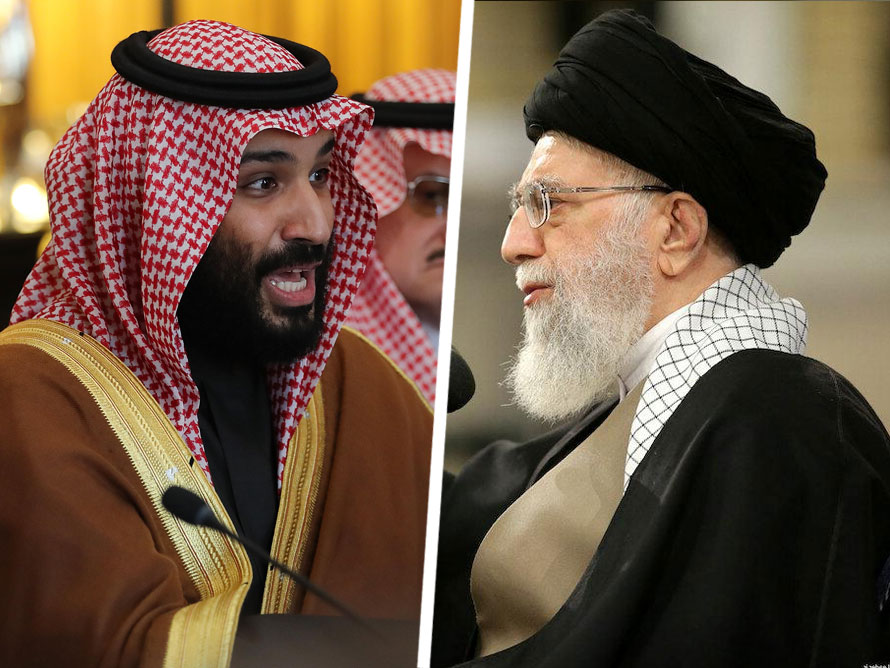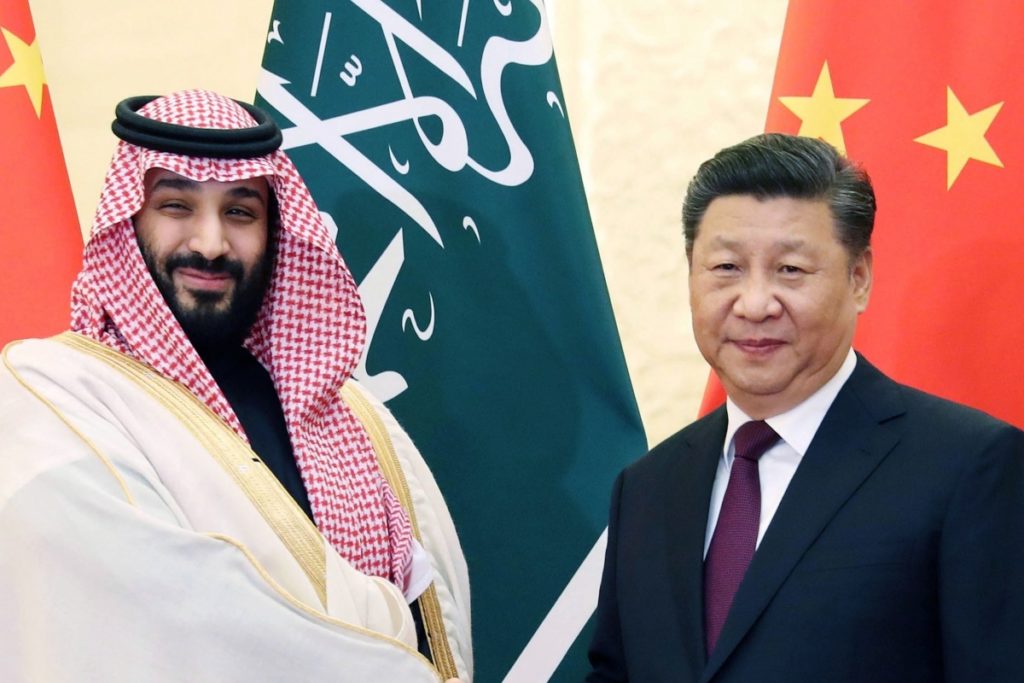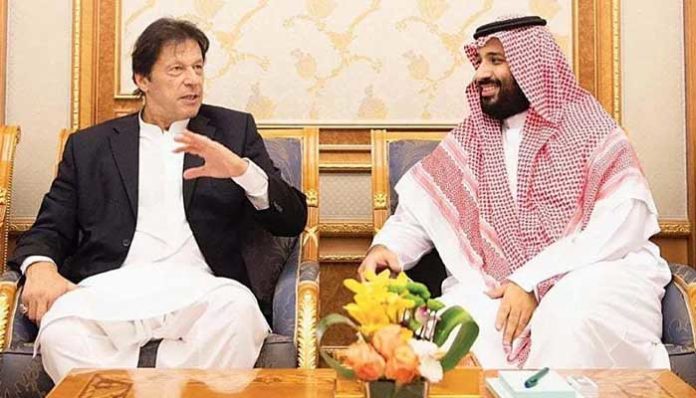Context
In an endeavor to decipher the emerging geopolitical realities, PoliTact occasionally partners with leading thought centers to understand the multi-faceted tangents of a particular theme. On November 16, 2018 PoliTact collaborated with the Middle East Institute to examine the political, security, and economic interconnections between South Asia and the Gulf States, and one of the subsets, Pakistan and Gulf Cooperation Council (GCC). While this interrelationship is not new, it is likely to become more pronounced in the future.
Dr. Marvin Weinbaum, Director for Pakistan, Afghanistan Studies Center at the Middle East Institute, moderated the panel discussion. The panel included:
Ambassador Gerald Feierstein, Director for government relations, policy and programs, at the Middle East Institute and US ambassador to Yemen from 2010-2013.
Ambassador Richard Olson the former US ambassador to Pakistan and Special Representative for Afghanistan, Pakistan. Former ambassador to UAE (2008-2011).
Shamila Chaudhary, Senior South Asia fellow at the New America Foundation and former director for Pakistan and Afghanistan at the National Security Council, White House (2010-2011).
Shehryar Fazli is a Political Analyst and Consultant at the World Bank.
This discussion explored the following key questions:
o Can Pakistan play a Mediating role in Yemen and other Middle East conflicts?
o Is Saudi Arabia joining China-Pakistan Economic Corridor (CPEC), and what are the implications?
o How is Pakistan managing the Saudi-Iran tensions and what is the future of this delicate balancing role?
o How is the GCC influence likely to play out in Pakistan’s policies?
o Do China and Pakistan have a common approach towards the Middle East?
o What is the role of India in this changing dynamic?
o What are the implications for the US policy in the region and how are US policies impacting Pakistan’s posture?
o How are the policies of PTI led government in Pakistan shaping up towards GCC?

Analysis
1. The Connection of South Asia and Gulf States
As mentioned above, PoliTact has been analyzing the connection between the political dynamics of the Middle East and South Asia. As the situation of Middle East has been deteriorating gradually, we have contended that sooner or later it is likely to intersect and influence conflicts such as Afghanistan and Kashmir that have been boiling in the South and Central Asian theater.
The key question is what is the direction of this impact meaning do the affairs of South Asia influence the Middle East more or vice versa? PoliTact has contended that this trajectory flows and is influenced more from Middle East towards South Asia.
The panelists however had a varied view on the connection between the two regions. Ambassador Olson noted that this interconnectivity is not new but the Imran Khan led government is a new factor in this dynamic. However, Shamila Chaudhary took a slightly different angle to examine the geopolitical significance of this relation, and pointed out that the right questions were not being posed when it comes to this linkage. For example, how does Pakistan look at the Middle East and the role of Non-State-Actors?
But what about the other part of the equation, the influence of Gulf region on Pakistan and India especially if Iran and Saudi rivalry becomes more intense.
Chaudhary stressed that Gulf region has been very involved in the Afghan issue and to some extent Pakistan desires this. Moreover, she emphasized the role of Pakistan’s Shiite population as a balancing act when it comes to Pakistan’s ties with Iran.
Ambassador Feierstein, however, added that there is no question if tensions continue to grow between Iran and Saudi Arabia, the UAE and the Saudis would look to Pakistan to protect their interests, and it would become very difficult for Pakistan to balance its domestic pressures and foreign policy. Sheryar Fazli added that Iran Pakistan Pipeline is already one of the causality of this tension. If something major happens between Iran and Saudi Arabia, there are no good options for Pakistan.
Ambassador Olson observed that the recent security changes pose existential threats for the Gulf region and the stakes are much higher, and this will lead to greater pressure on Pakistan to make unpleasant choices. To which Ambassador Feierstein posed a hypothetical question: what could be the situation when Gulf States decide to call on allies like Pakistan. He assumed that it could be when Gulf States think that they cannot handle the circumstances on their own, or with US help.
2. What is the Role of India?
Then there are the growing ties between India and the Gulf States and how this might impact Pakistan. Ambassador Olson stated that similar to the approach adopted by the US towards Pakistan-India ties, the Gulf States have also embraced a de-hyphenated approach towards the two nuclear South Asian states. The Gulf States are building economic ties with India but this is not at the cost of Pakistan.
Shamila Chaudhary laid out how Indian analysts view policy towards the Gulf States, which is based on the principles of being Non-Intrusive, Non-judgmental, and Not-taking sides. She went on to add that Pakistan does need to pay attention to the growing nexus between India and the Gulf States, especially when its transitioning from purely economic and into security and defense domains. Moreover, unlike Pakistan, India has no interventionist or mediatory interests in the Middle East.
Nonetheless, India wants to be a member of any reformed UN Security Council and that may be one of the reasons for its enhanced ties with the Gulf States. It also assists in building leverage against Pakistan’s good ties with the Gulf States. The panelists overlooked that like India, the ties of Gulf States are also maturing with Israel. This dynamic will push Pakistan to review the nature of its ties with Israel, and long-standing point of contentions with India.

3. Balancing the Saudi-Iran Ties
Now coming to the issues that represent the fault lines between Iran and Saudi Arabia, primarily Yemen and the extending arc of Iranian influence in the Middle East, accompanied by the threat posed by the Non-State-Actors.
Shamila Chaudhary thought that Yemen was not that big of a deal between Pakistan and Saudi Arabia, but Ambassador Feierstein disagreed with this assertion. He complemented Pakistan that it has performed the balancing act between Saudi Arabia and Iran very nicely up to this point.
According to Ambassador Olson, former Prime Minister Nawaz Sharif was vetoed for getting the military involved in the Yemen conflict, despite Saudi insistence. Moreover, Pakistan’s military is acutely aware of the sensitivities of its Shite-Sunni composition. So, Pakistan would not want to get involved in any conflict with Iran, nor will it want to get in the position of choosing.
However, Chaudhary opined that many of the Non-State-Actors have the support of private networks and are now operating beyond state influence, and their actions have policy implications.
On the other hand, Ambassador Feierstein stated that UAE and the Saudis are taking a more assertive stance and asking allies to choose sides. In this environment, Pakistan will be forced to choose but it will not want to. And this explains why the new PTI led government in Pakistan wants to mediate in Yemen and to prevent the eventuality where it will have to choose between Iran and Saudi Arabia. However, Ambassador Feierstein was vehement that Pakistan will not, and neither will be asked to mediate in Yemen or beyond, because it is seen to have a client status with Saudi Arabia.
Obviously, the interrelated question is how will Iran respond if Pakistan was to completely side with the Saudis. According to Fazli, Iran withdrew its support from Baluchistan based proxies in the past but some level of Iranian support does exist in the Kurram tribal area. Additionally, Pakistan considers its Shiite population getting involved in the Iraq and Syria conflict as a potential threat.

4. Role of China and Saudi Involvement in CPEC
The South Asia and Gulf connection cannot be fully understood without also considering how these regions fit in the tussles of the emerging and established powers. In this regard while the US seems to be withdrawing, China, in addition to its economic partnerships, is also increasing its security role.
However, Ambassador Olson considers Saudi interest in Pakistan and CPEC two distinct matters, and that Chinese Belt and Road Initiative is more about exporting Chinese excess capacity. He commented US had tried to connect American companies with CPEC during his time as Pakistan’s Ambassador, but the attempts were not fruitful because of the way CPEC works. While the Saudis have decided to help Pakistan financially, it may not want to get involved in opportunities related to CPEC. He added US was unlikely to lend its traditional support for the IMF assistance to Pakistan.
On the contrary, Shamila Chaudhary considered it to be strategic for everyone to be aligning with China. The discussion about the Saudis interest in CPEC was taking place at just about the time when Pakistan was considering seeking assistance from IMF. Chaudhary added that the US has helped in building regional connectivity in South and Central Asia, and now it is getting less involved in the region, and is watching the developments from outside a little grudgingly.
However, Ambassador Feierstein thought Pakistan and China ties couldn’t be understood in isolation. China’s security role is increasing in the wider region and Pakistan may facilitate ties between the Gulf States and the Chinese. The Saudi king also visited China in 2017 and efforts are underway to link the Saudi Vision 2030 with the Chinese BRI.
At the same time, China has also been growing its security presence and may develop an airbase in Pakistan, in addition to its support for Gwadar and military facilities in Djibouti. China wants to protect the sea lines of access and routes for the Saudi oil, and the BRI path also passes through the Red Sea.
Meanwhile Sheryar Fazli pointed out to the risks if the Saudis were to put the oil refineries close to the border with Iran where Baluch insurgency, Lashkar e Jhangvi, and Jundullah could threaten Saudi interests.
5. The Impact of US Policies on Pakistan’s Approach
The other important question to examine is how are the policies of the US government impacting Pakistan’s outlook for the Middle East.
According to Ambassador Feierstein, diminishing US role in the Middle East is pushing other global powers to fill the vacuum and has encouraged an enhanced engagement by the Russians and the Chinese. Moreover, this is also acting as a catalyst for more aggressive actions by the Saudis and the UAE, which have been demanded by previous US administrations to counter extremists. And this is where Pakistan’s security engagement with the Saudis fits in.
However, the US approach towards Iran creates a challenge for Pakistan’s balancing role in the Middle East.
On the other hand, Ambassador Olson pointed out it would be important to watch how US frames its policy towards IMF assistance to Pakistan and addresses the Chinese influence. And this may be a test case for how US will respond to BRI related indebtedness generally. He further opined that US hard line approach towards Pakistan has peaked and it now probably has to recede especially when US needs the country to bring about a political settlement in Afghanistan, and that is also geographic reality.

The moderator, Dr. Weinbaum commented that another scenario to watch out for is if the attempts towards Afghan reconciliation fail and how that may play out in the region.
6. New Government in Pakistan and its Foreign Policy
Another interesting aspect to consider is what difference will the PTI led Pakistan government make. Will there be continuity in Pakistan policies and its posture towards the Gulf region or will there be disruption?
Fazli claimed that Imran has continued the policies of the past, and some of this is dictated by the dire fiscal condition of the country. There was no surprise that Imran’s first official visit was to Saudi Arabia. In his fiscal approach, he wants to lessen the dependence on the West and IMF.
However, a critical point to watch out would be PTI’s relation with the opposition and political stability in Pakistan, when it has a very narrow majority. Chaudhary added that what we are realizing is that many of Pakistan’s challenges are systemic and are not going to be solved by one person. When it comes to foreign policy and Middle East, Imran has the least influence.
Ambassador Olson also commented the Prime Minister in Pakistan has more authority in the domain of economic, education, health and social programs, and the least in the arena of foreign policy, where the military dominates. So he contended and countered Fazli that it’s not the relation with the opposition, but PTI’s relation with the military, or the civilian-military relations, that will be crucial. Because of Imran’s personality, a clash could eventually develop, especially if he asserts independence from the military. As it relates to UAE, the nation was closer to the Bhutto’s, while Nawaz Sharif was nearer to the Saudis, and Imran is an unknown entity.
Conclusion
One of the significant considerations as it relates to the connection between the Gulf States and Pakistan is the rapid pace of change in the variables that were once considered to be the constants. Now we are seeing diminishing US involvement in the region, independent government in Pakistan, and unpredictable young leadership in Saudi Arabia.
In this environment, the Pakistan’s security connection with the Middle East is likely to take on added significance. The offering of economic aid by Saudi Arabia and UAE to Pakistan is part of the emerging circumstances where their leverage is growing over Pakistan. And this most likely is also out of concern to mitigate any Pakistani tilt towards Iran.
Recent events indicate that Afghan peace talks now involve UAE and Saudi Arabia, which previously centered around the Qataris. Moreover, the closeness of the Gulf States to the US also creates a unique twist for Pakistan. It was in this context that the author asked the panel about the significance of the potential NATO alliance, seemingly with US support, and how this correlates with the Islamic Military Counter Terrorism Coalition (IMCTC). The IMCTC was formed by Saudi Arabia and is headed by Pakistan’s retired military chief. This potentially is a point of convergence between the Gulf States, US, and Pakistan.





